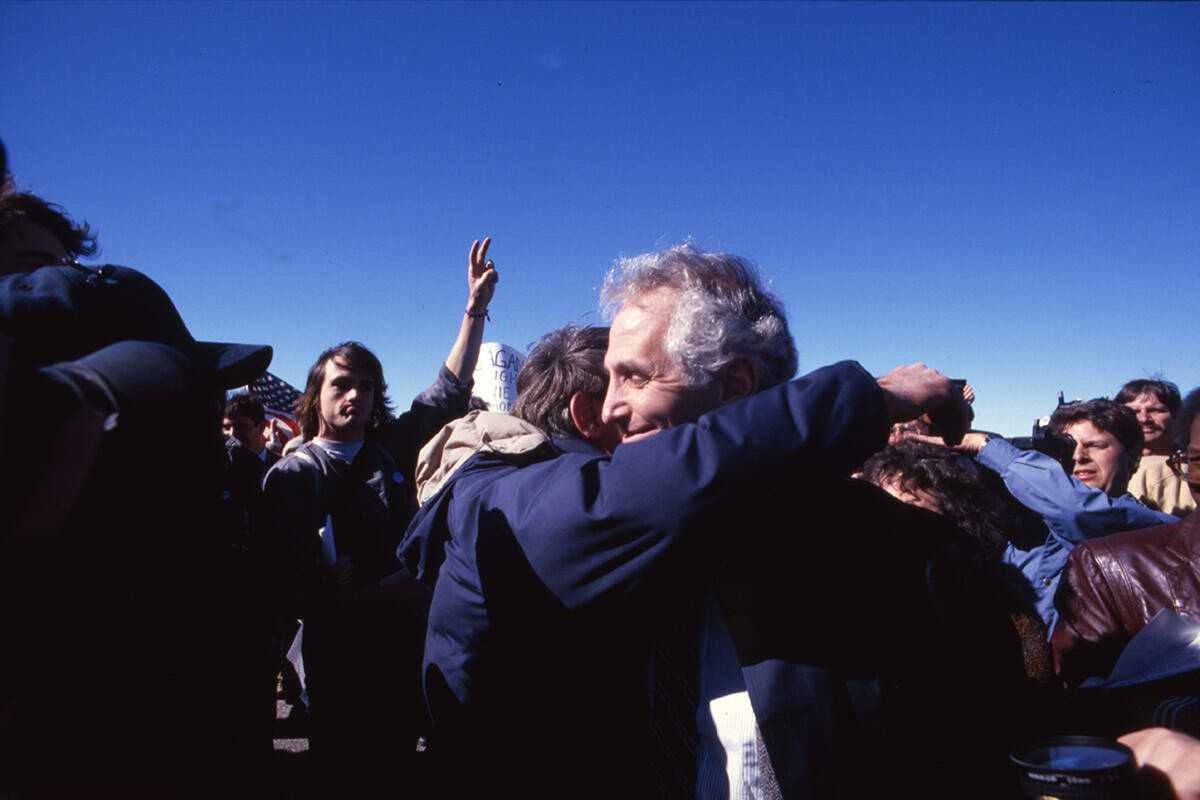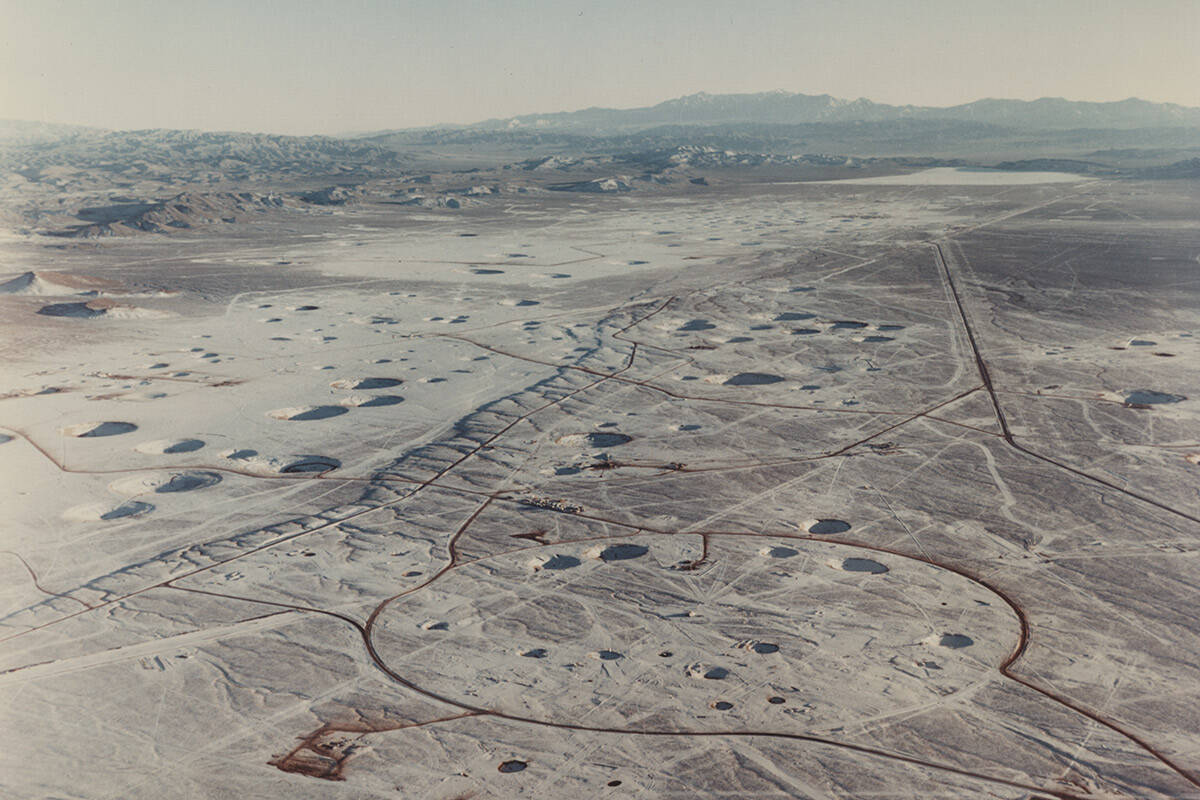‘We are all downwinders’: New film discusses Nevada’s nuclear fallout
“At the end of the day, we are all downwinders.”
That’s the message directors Mark Shapiro and Douglas Brian Miller hope viewers take away from their upcoming film “Downwind,” a documentary on the health consequences of nuclear testing at the Nevada Test Site (now called the Nevada National Security Site).
The test site saw over 900 nuclear detonations between 1951 and 1992, including 100 atmospheric tests that could be seen from as far as Las Vegas, 65 miles south of the test site, and St. George, Utah, which has above-average rates of radioactivity compared to the U.S. average.
The film centers on the areas closest to the blasts in Utah and Nevada, where communities officials once deemed a “low-use segment of the population” bore the brunt of the fallout — mainly Mormon communities, Native Americans and other rural residents, Shapiro said.
Because of its Utah focus, the filmmakers wanted to debut it in the Beehive State at the Slamdance Film Festival in Park City.
The film premieres Jan. 23 and will be preceded by a panel featuring Miller and Shapiro, along with downwinder advocates Claudia Peterson and Mary Dickson, Nevada Shoshone Nation Principal Man and spokesperson Ian Zabarte and Scott Williams, a nuclear policy consultant from Heal Utah.
Falling down the rabbit hole
Shapiro and Miller said they became interested in researching nuclear fallout after reflecting on their families’ history of cancer, which is found in higher rates in communities in proximity to the test site.
The two descended down a rabbit hole of research on the widespread impacts of radiation from nuclear testing, and found out radiation is not exclusive to the Southwest.
“Even if you don’t live in St. George, the radiation impacts us globally,” Shapiro said.
Miller said he was awestruck by a map from researcher Richard Miller (no relation) that shows how far the winds blew the radiation across the U.S.
“It blasted the entire country, minus Los Angeles because of the way the wind was blowing. … It just changes your whole mindset of ‘Is this real?’ And then you continue to dig,” Miller said.
Talking with Nevadans
Miller and Shapiro spoke with many Nevadans about their experiences with nuclear fallout, including members of the Western Bands of the Shoshone Nation of Indians such as Zabarte. The test site is on the traditional homelands of the Western Shoshone.
“We wanted to make sure that we had the perspective of Ian and others from the community to talk about the significance of testing on land that they still consider theirs and theirs by treaty,” Shapiro said.
The duo found support from late Review-Journal reporter Keith Rogers, whose career at the newspaper focused on the test site, military issues and the environment. Rogers died in October.
“We looked at him as a significant contributor to this film,” Shapiro said. “(For) both Doug and I, he was like a father figure to us. He really helped guide a lot of the story.”
Rogers is featured in the film, and behind the scenes helped Miller and Shapiro connect with people who work at Atomic Testing Museum and to past test site employees.
The greatest resource Rogers gave the team, Shapiro said, was a U.S. nuclear test booklet from the Department of Energy, which detailed every test ever done at the test site.
“Each one of them has a name, it has a date, it has a location, it has the yield range — some of these bombs were several times larger than the bombs dropped in Hiroshima and Nagasaki,” Shapiro said. “This booklet that he gave me, you see notes from the government saying ‘accidental release of radiation detected off site.’ It almost gives you shivers — it’s the rabbit hole effect.”
The film also stars actor Martin Sheen, who serves as the film’s narrator and has spoken out against nuclear testing, and comedian Lewis Black, who adds humor to a dark story about America’s past and has joked about duck-and-cover drills in his stand-up routines.
“(Black) is a political commentator, and his comedy is a reflection of the time we live in,” Shapiro said.
Holding accountability
Miller hopes the film shows that residents whose lives have been changed by testing should be compensated and that Americans can find ways to prevent testing from happening again, he said.
“We have to make sure that we’re holding our government accountable for what’s happening,” Shapiro said. “While we recognize how much we love living here (in the U.S.), still, there’s accountability.”
For more information on the film, visit backlotdocs.com.
Contact Taylor Lane at tlane@reviewjournal.com. Follow @tmflane on Twitter.



















